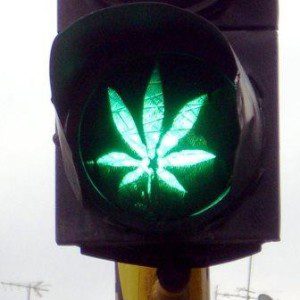
The risk of getting into an accident is high enough. But the number of people driving on various substances doesn’t help.
“In 2013-2014 20% of weekend nighttime drivers tested positive for drugs …”
National Highway Traffic Safety Administration – February 2015
One national study with a database of over 40 years shows fewer drivers now drink alcohol before getting behind the wheel. But on the other hand more use drugs of all varieties, whether legal prescriptions, illegal substances or marijuana.
Impaired Drivers – Alcohol
The good news in a national study by the National Highway Traffic Safety Administration is that fewer drivers have alcohol in their systems. Only 1.5% of weekend drivers in the National Roadside Survey had blood alcohol concentrations at or above the legal limit, with 8.3% having “measurable amounts” of alcohol in their systems.
The numbers show those driving at or above the legal limit of alcohol in their systems during weekend hours declined 80% since the first study in 1973.
Impaired Drivers – Medication & Illegal Drugs
There’s been a 16 percent increase in the number of nighttime weekend drivers with positive drug readings in the seven years since the last time the same study was conducted in 2007.
The proportion of drivers on prescription medications during that seven-year period increased from 3.9% to 4.9%. The number of drivers showing positive readings for illegal drug use increased from 12.4% in 2007 to 15.1% in 2014. A full 20% of all weekend nighttime drivers in the 2014 survey tested positive for drugs when the 2007 measuring criteria were applied. This increase in drivers with illegal drugs in their systems is not good. Not only does the driver pose a risk to themselves, but they’re also risking the lives of other drivers and pedestrians. It’s so important that people stop driving with drugs in their system as they can have an impact on reactions and decision making.
Marijuana on the Highways
The biggest increase in substance use by those driving vehicles was marijuana. In the 2007 study 8.6% of weekend nighttime drivers tested positive for THC, the active ingredient in marijuana. That number increased to 12.6% in the 2014 study, a 48% increase. That means approximately one in eight drivers on the road at night over the weekends has been smoking pot.
The National Roadside Study
The National Roadside Study, conducted by NHTSA, has been done four times since 1973. The survey released in 2015 looked at drivers nationally in 2013 and 2014. It targeted 9,000 volunteer participants who agreed to various testing including breath, blood and saliva.
Impaired Drivers & Accidents
With 20% of weekend nighttime drivers testing positive for drugs of some type, and a 48% increase in drivers using marijuana, it’s only common sense that such drivers will be involved in motor vehicle accidents.
If you have been in an accident look for signs of substance abuse by the other driver. Some are obvious and others may not be so obvious:
- Bloodshot eyes, slurred or other unusual speech patterns.
- Fumbling for papers.
- Sending a passenger to interact and exchange paperwork.
- Driver refusal to exit the vehicle even if not injured badly.
- Pleas to avoid calling police.
After an accident look for such signs and document them as best you can. As you know, signs of any drug use go away over time. After any accident look for uninvolved witnesses, get a business card or write down name, address and telephone numbers.
If you have been injured in a motor vehicle accident do not attempt to handle the claim yourself. Insurance insiders will tell you the insurance industry has geared itself up to reduce and grind down your claim: click here. My office has handled many car accident and other serious injury cases and is well prepared to pursue your legitimate claim for injuries.
In an analysis of the study NHTSA points out that not all of those on the various substances are necessarily impaired by definition. Some had low levels of chemical use. Others used substances such as marijuana for which determining impairment in a traditional sense is still subject to further study.
Photo Credit: Creative Lights by Alejandro Forero Cuervo. License.
Views: 2




